Port Phillip Bay is a superb fishing destination, offering a great variety of fish species. The annual snapper migration into Port Phillip Bay, known among local fishing enthusiasts as the Crimson Tide, places the Bay on the map as the best snapper fishery in Australia.Covering 1,950 km2 in area with 264 km of coastline, Port Phillip Bay is the largest, almost enclosed “inland sea” in the Southern Hemisphere. Hence, there is plenty of room for everybody to catch and there is always a location where the wind is blowing offshore. The map below shows the fishing hotspots in Port Phillip Bay. Click a placemark to view the GPS coordinates and fish found in a particular location.
I will first begin the journey from Altona where I live. Altona and the western seaboard are popular areas for recreational fishing. There are good spots less than 500 metres from the Altona Boat Ramp, which is possibly the finest large boating facility in Victoria. The following table shows the fish variety available around Altona.
| Location | Fish |
| Water off Altona Boat Ramp | Whiting, Pinkies, Snapper, Flathead |
| Mouth of Lower Kororoit Creek | Whiting, Flathead |
Water off Williamstown Footy Ground
|
Pinkies (seasonal), Leatherjacket Snapper (seasonal), Gummy (during dusk) |
| Water 30-50 metres west of Millers Rd | Top spot for Pinkies (seasonal) |
| The Stick | Whiting, Pinkies, Flathead, Snapper |
| Red marker between the Stick & Altona Pier | Big leatherjackets |
| Water between Altona Pier & Point Cook | One of the best flathead fishing in the bay, about 15-20 fish per hour |
| Gutters at mouth of Skeleton Creek | Massive flathead of over 3 kg in summer |
| Water between Dumb Joe & P2 buoy | Good snapper area |
| P2 buoy | One of the best snapper fishing in the bay |
| Werribee South | Bream, whiting, snapper |
| Kirk Point | Snappers (in shallow water) |
Not surprisingly, the author of the above information says that one will not be disappointed as fishing around Altona is very rarely a fishless exercise. Now, let us move clockwise from Altona along the shores of Port Phillip Bay.
Hobsons Bay
- This bay at the top of Port Phillip, between Williamstown and Port Melbourne, produces beam, mullet, whiting, flathead, leatherjacket, snapper and occasionally mulloway.
- The Hotties or Warmies is a channel, 20 m wide by 200 m long, where hot water is pumped by Newport Power Station into the bay. When warm water flows, bream, tailor and mulloway are regularly caught by anglers using both hard-bodied and soft plastic lures.
Docklands
- Hotspot for big breams.
- Anglers often encounter resident mulloways.
- Soft plastics is the preferred method of fishing though bait still works well.
From Elwood to Sandringham
- Anglers can catch large amounts of snappers from November to Christmas, particularly just before sunrise and sunset.
- Garfish are also common especially when the snappers are running.
- A boat is not required as shore-based fishing regularly produces good catches of salmons, whitings and snappers.
Southeast Seaboard
- Large mussel beds are located off Aspendale, Edithvale and Chelsea and are home to snappers of all sizes in the warmer months.
- Waters off Seaford and Frankston produce large amount of snappers from November to April while whitings and squids inhabit the shallower waters.
Mornington Peninsula
- Waters between Frankston and Mt Martha are notable as the bay’s best snapper grounds.
- Mornington and Mt Martha are popular with anglers. Mornington Pier and many rocky platforms provide land-based anglers with consistent catches of squids, whitings, snappers, salmons, flatheads and barracoutas. Whitings, squids, flatheads and pikes are caught all year round while snappers, sharks, garfish and salmons are abundant in the warmer months.
- Squids and whitings are abundant both inside and outside the Mussel Farm above the extensive grass beds and reef off Safety Beach.
- Deep water off the Cape is home to flatheads, snappers and sharks.
- Grass beds and reefs of Sorrento and Blairgowrie are famous for their whitings & squids.
- Snappers and sharks can be caught in the shipping channel, particularly around the Shark Hole just north of Sorrento.
- Sorrento Pier provides land-based anglers with productive catches of squids, whitings and leatherjackets.
- Point Nepean is an excellent fishing location for squids, whitings, snappers, sharks, kingfish and flatheads.
Southern End and Entrance of Port Phillip Bay
- Peak season is during the warmer months of November to April when there are abundant snappers, squids, whitings and yellowtails.
- At Nepean Bay, anglers regularly target yellowtail king fish 600m out on an outgoing tide.
- Land-based anglers do well at Nepean Bay and at the piers of Queenscliff and Point Lonsdale.
- Seven-gill sharks are the most commonly caught sharks.
Bellarine Peninsula
- Prime locations for King George Whiting are between St Leonard & Prince George Banks, particularly at Grassy Point and Governor Reefs.
- The channels off St Leonard are home to both snappers and flatheads. However, if the snappers are around, the flatheads will disappear and vice-versa.
- Snappers can be caught by land-based anglers at St Leonard Pier after a strong northerly wind.
- Whitings, flatheads and leatherjackets are regularly caught by land-based anglers at Portarlington Pier during summer.
- Point Richards off Portarlington is a hotspot for whitings especially during the warmer months.
- Good snapper fishing can be found 3 km north of Port Richards channel, particularly between Beacon No. 3 and 5. This area is easily accessed from Port Arlington Boat Ramp.
- Clifton Springs has a boat ramp that gives good access to Curlewis Bank where whitings abound.
Corio Bay
- This is home to whitings, snappers & flatheads.
- Trevallies, flatheads, barracoutas & slimly mackerels are regularly caught by land-based anglers at Cunningham Pier.
- Big flatheads, spotted lings, snappers & gummy sharks are regularly caught at Geelong Grammar School Lagoon.
- Avalon is a regular hotspot for whitings, best fished between the channel markers inside the old channel.
Types of Fish
The most popular fish in Port Phillip include snapper, flathead, whiting, bream, gummy shark, squid and garfish.
Snappers are caught in Port Phillip Bay all year round. Yet the majority of the larger fish are caught between October and April. Beginning from early Spring each year, tens of thousands of snappers make their way into Port Phillip Bay through the Rip. The movement starts with a drip that becomes a trickle, then a flood like a crimson tide. This mass migration is a spectacular event, filled with mystery and speculation. Their wintering sites are still unknown but come Spring, vast schools of snappers will follow their primordial instincts on invisible marine trails back to Port Phillip Bay.
It is speculated that the snappers navigate by chemical signatures present in minute quantities in the ocean currents. It was originally believed that snappers return to Port Phillip Bay in Spring to breed. However, there is insufficient evidence from egg and larvae surveys that significant bay spawning has occurred and this remains another mystery of these enigmatic fish.
In the early stages of the migration, the snappers follow a predictable path. Catches will be reported from Queenscliff, Mt Martha and Mornington. Within days, the snapper will be running along the eastern seaboard. By next month, they will be schooling off Carrum, Seaford, St Kilda, Williamstown, Altona and Corio Bay. The peak period in terms of consistency and numbers is October to mid-December.
Snappers feed in deeper water of 15-20m during the day and in shallower water of 8-15m at night. After a strong wind has stirred up the seabed and made the water murky, land-based anglers can do well, particularly at piers and rock walls of places such as Point Lonsdale, St Leonards and Mornington. Snappers are a schooling fish so once located, large catches can be common. Best baits for snapper are squids, silver whitings, cuttlefish, octopus, pilchards, barracoutas and salmons. Corio Bay is a good location for catching snappers in winter.
While large snappers are normally caught in deep waters, smaller juvenile fish known locally as Pinkies are often caught over the same shallow broken grounds that whitings haunt. Pinkies are ferocious feeders and move about in large schools. While Pinkies are caught throughout the year, the peak time to chase them is from December to April.
- One of Australia’s best tasting fish, with a delicate flavour and firm white flesh.
- Found throughout the bay. Best spots tend to be over grass beds, patchy reef or any area of broken ground. Rarely found in water deeper than 10m.
- Rarely exceed 800g; 1 kg fish possible from Dec-Apr.
- Suitable for both land-based and boat angling. Possible to catch 20 fish in an hour from a school of whiting.
- Use light spinning rod and reel, line lighter than 4 kg, No. 4 long shank hooks and a running sinker rig.
- Best baits are mussels, squids, pippies and sand worms.
- Migrate into the bay each year around October to spawn.
- Caught throughout the bay over most grass beds and reefs.
- Ideal locations are flat reef with good weed cover in 3-4m of water. Best catching areas at Queenscliff, Point Lonsdale and Point Nepean.
- 3 kg and above in the southern end of the bay, 200-400 g in other parts of the bay.
- Most popularly caught by use of prawn or Yo-Zuri squid jigs which are cast and retrieved in a slow jerking and sinking manner. Bait jigs are very effective on larger squids.
- Apart from being a delicacy, squids are also one of the best baits, used in catching snappers, whitings, flatheads, gummy sharks and other fish.
- Move freely around the bay in schools, which are easily identified from birds diving for baits herded by the salmons.
- Tend to stay close to shore and prefer a bottom with patchy reef.
- Range from 200 g to over 4 kg. The smaller salmon is also known locally as Bay Trout.
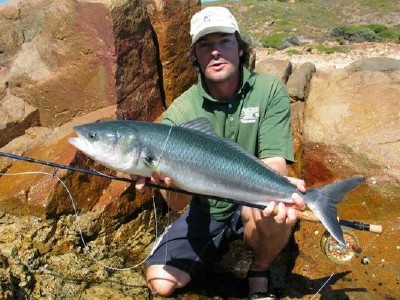
Photo by flyreels
- Found throughout the bay during the warmer months, over the same sort of seabeds as whitings or out deep in the channels frequented by snappers.
- A good burley of tuna oil, bread, fish scraps and pellets can attract large schools to the boat.
- Use a float, a No. 12 or 13 hook baited with silver fish, maggots, pipies or fish pieces.
- Make fantastic bait for snappers.
Photo by Krüger
- Can reach over 25 kg.
- Found in the Rip and along the Lonsdale wall.
- Many locals fish for them by slowly trawling with strong handlines with squid baits.
- Best baits are konaheads, rubber squids and minnow styles.
- Occasionally mix into the salmon school so are sometimes encountered when fishing for salmons.
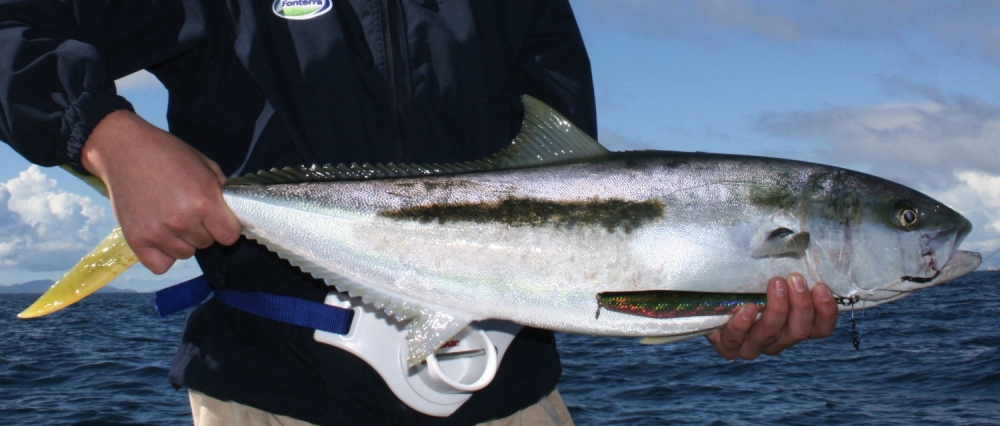
Photo by Nholtzha
- The gummy is the most regularly caught edible shark. Seven-gill and whaler sharks are the most common larger sharks.
- Most common during the warmer months as they follow the migrations of snappers into the bay and are generally caught with snappers.
- Best baits are oily, bloody fish flesh like tuna, trevally, salmon and pilchards.
Courtesy of Peninsula Total Tackle
Reference
- Fishing Port Phillip Bay
- In tune for a snapper sensation
- Hot Spots – Altona & Pt. Cook
- Snapper Secrets
- The snapper season is almost upon us, and it looks like it will be a cracker


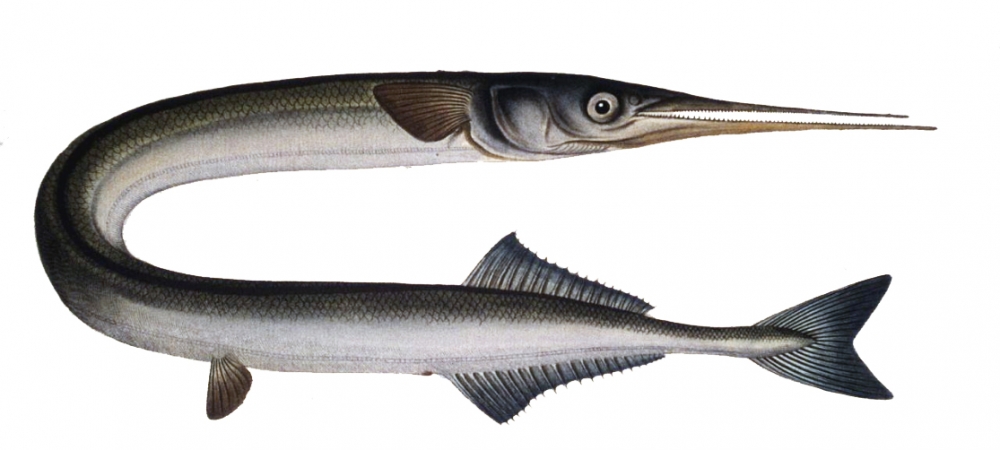
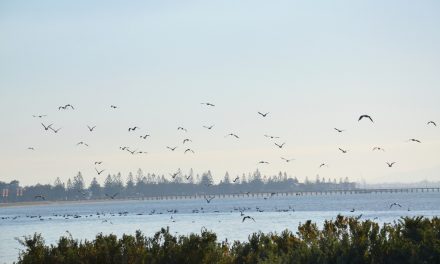
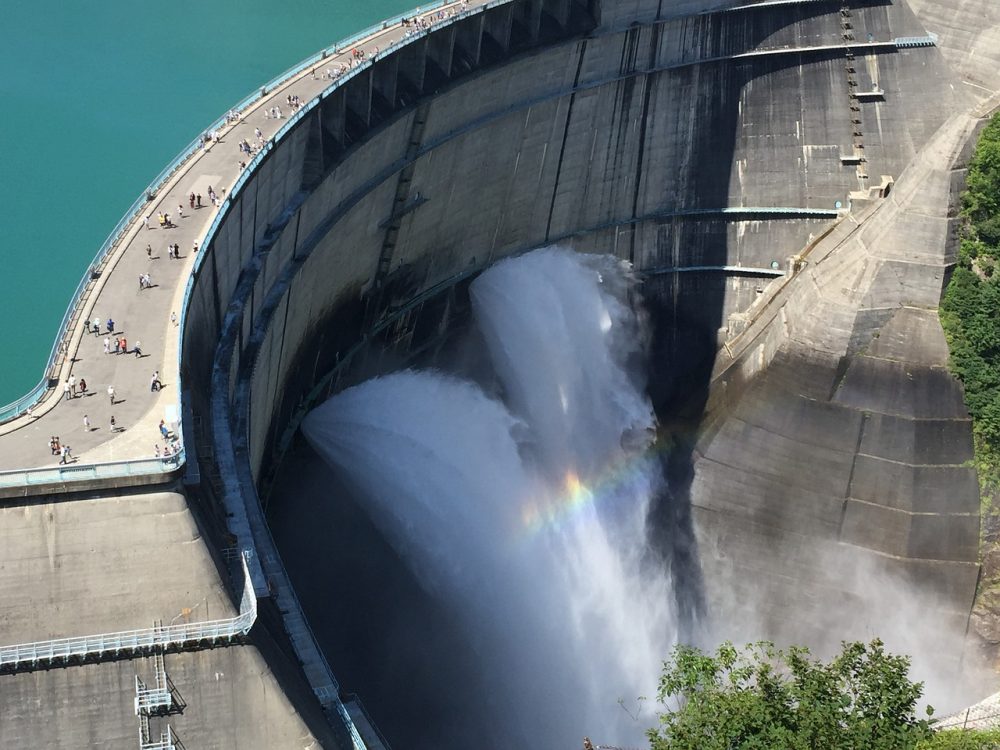
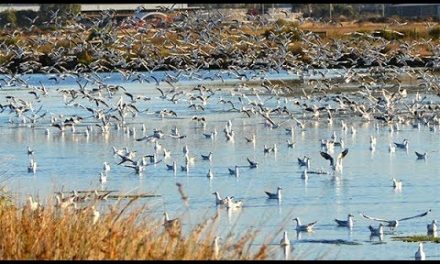
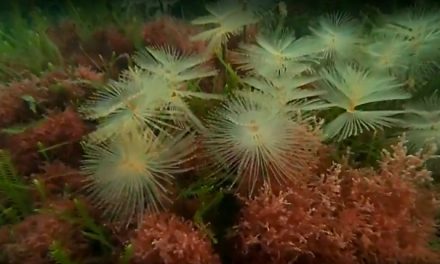
can someone tell me what format was used for the gps coordinates
Decimal Degrees:
just go to
http://www.jeepreviews.com/wireless-gps-coordinates
GPS Coordinate Conversion
it should help you out…
Hi, how can I save all these spot to my google map? Thanks.
Hi, can someone tell me how to save all these spots to google map? Thanks.
Good work…unique site and interesting too… keep it up…looking forward for more updates.
anyone knows any spot for spearfishing in altona or werribe
any spot for spearfishing in altona who knows ?